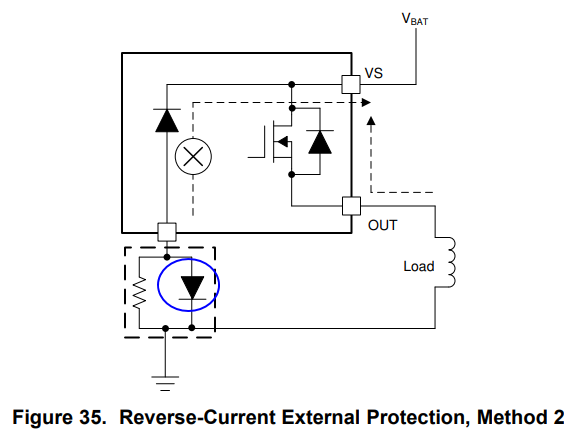Hi BU team
TPS2H160-Q1 was designed in their ADCU board for POC rail and below reverse-current external protection circuit was implemented in the board. The diode was Schottky diode NSVBAT54SWT1G which have less than 0.43V Vf voltage at 10mA load under -40 degree.

But customer made a mistake on CL pin's GND connection and the current limit resistor was connected to the board GND not device GND. Customer found that tps2h160-Q1 can work normally under room temperature.
Would you help share your comments on the risk if customer don't re-design the board on CL pin? Whether will the maximum 0.43 potential voltage between device GND and board GND make tps2h160-Q1 not work?
Thanks


